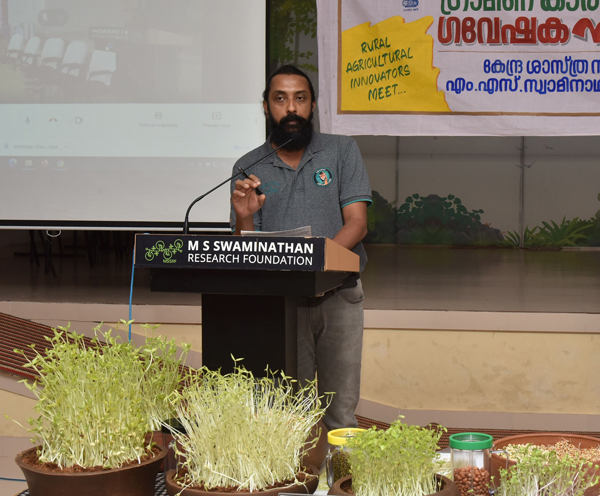Joseph John

In the present age, where there is an influx of many lifestyle diseases from Diabetes to obesity, consumer is becoming pretty health-conscious. Mr Babu Paul from Ernakulam has come up with a great solution by designing a special germination unit for the production of microgreens which are a great source of nutrition. This microgreen unit can provide 200 grams of leafy greens within a span of seven days so that the leafy vegetable need of a family can be met. This unit can produce the sprouts free from any synthetic chemicals, grow in indoor conditions and allows year-round production. Since most people are either unaware of the importance of leafy green vegetables or consider it as a laborious process, this method makes it easier for anyone to produce and operate. This unit was made in line with the Food Safety Authority of India (fssai) slogan of Eat Right India. Since germinated leafy greens can rightly supplement essential vitamins and minerals to reduce hidden hunger and malnutrition, every household should have at least one single unit. This method is cost-effective and eco friendly and all the materials used are organic having recycling abilities. Usage of mud vessels and pots makes the growth of microgreens easier and at a lower cost with an eco-friendly approach.
“Bud Pod Seed Bed” is the name given by Mr Babu Paul for his invention. The unit consists of three parts i.e. a mud vessel that holds the entire system, a bud pod – a specially designed coir pith bed and of course the seeds, preferably legumes. Mud vessels can be made in any shape with a capacity to hold at least 5 liters of water. At the bottom of the vessel, designed grooves are given to store water and for the easy holding of the seedbed. The key component in this unit is the Bud Pod, a structure based on coir that acts as the real bed for the easy growth of the micro greens. This bed has two parts; one is made of coir pith & coir pith dust and other is made of coir baby fibres & coir needle felt. The third component is the seeds that germinate as nutritious leafy vegetables. Seeds preferably of legumes (green gram, cow pea and horse gram) can be used that grow fast and produce two leaves within a short span of time. As the seeds of legumes can grow with minimum quantity of moisture and light, the unit can be placed in indoor conditions in a corner of the kitchen also. 100-gram seeds of any legume can be spread over the Seed Bed to get it germinated and will be ready to harvest within six to seven days.
Since this method requires only earthen vessels and other organic materials, anyone can produce nutritious food at a lower price in their home. The units can be supplied in tribal settlements to improve the nutritious status and overall health condition of the tribal community. Since mud pots and pottery is considered as a village entrepreneurship activity, many people in the rural areas can also be trained in the production of earthen vessels to generate additional income. Proper branding of these earthen vessels can also be made for special uses and occasions such that the product itself can be embellished with names. M.S. Swaminathan Research Foundation has taken up initiatives to establish some of this Bud Pod Seed Bed as a trial in some of the selected households to enhance nutritional security. The pots were made in the district itself and technology for the making of the vessels are transferred to the local pottery makers and they are making the units. The promotion of such unique innovations can help achieve food and nutritional security, especially among the vulnerable community.
Contact: 09846138482
